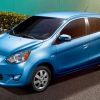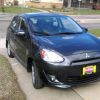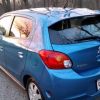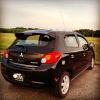I wont completely bash that post that Flatbroke shared, but I will just tell you that as a Tire Engineer, it is littered with inaccuracies... OP means well though. His contact patch discussion is relevant, however he explains it poorly (actually just plain wrong) He vaguely says Manufacturer Recommended Inflation, but doesn't clarify is he if referencing the Door Placard or the Tire Sidewall, etc etc etc...
Resident Tire Engineer

__________________________________________
 View my fuel log 2014 Mirage ES 1.2 manual: 44.4 mpg (US) ... 18.9 km/L ... 5.3 L/100 km ... 53.3 mpg (Imp)
View my fuel log 2014 Mirage ES 1.2 manual: 44.4 mpg (US) ... 18.9 km/L ... 5.3 L/100 km ... 53.3 mpg (Imp)



 Reply With Quote
Reply With Quote
 2014 Mitsubishi Mirage ES
2014 Mitsubishi Mirage ES The Skate
The Skate

 "Scarlett and Marsha"
"Scarlett and Marsha"
 Speck
Speck Basic
Basic
